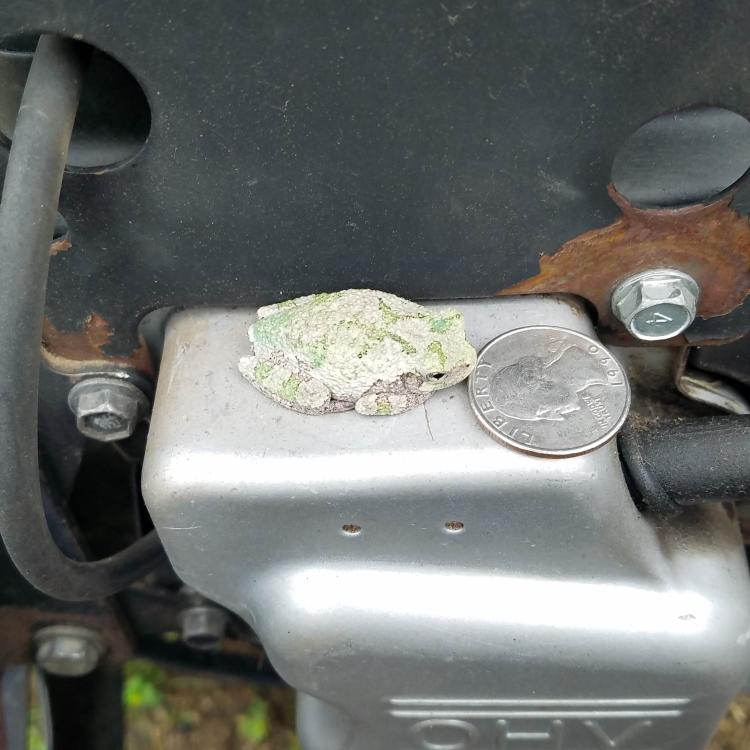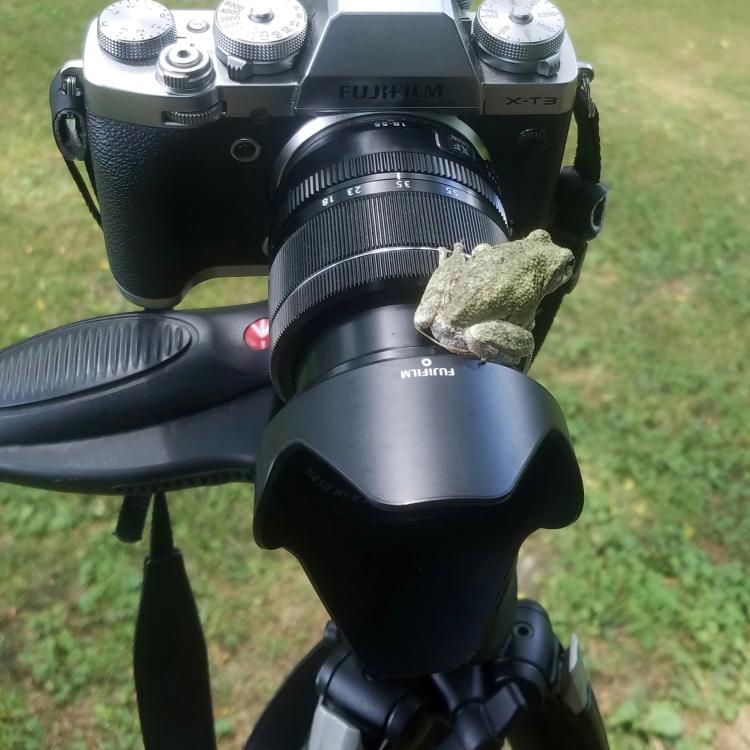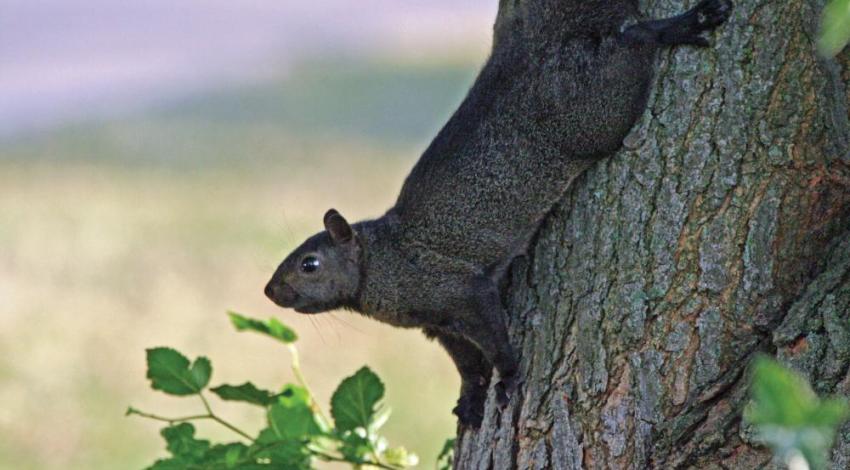Piebald deer
With summer in full swing and people spending more time outdoors this time of year, wildlife sightings have been numerous as of late. Below are three of the more interesting critters that readers have contacted me about recently. One has to do with a white deer, and the other two are sightings of gray treefrogs. I profiled gray treefrogs (Nature’s Rainmaker) in my July 2021 Woods, Waters & Wildlife column in Ohio Cooperative Living, which may have put people on the lookout for these small, secretive, yet loud amphibians.
Pam Klopfer, South Central Power Company
Q. I was quite surprised recently while enjoying coffee at 6 a.m. on my patio. Attached is a photo of an albino deer that was in my backyard! I hurried to get my camera with a 500mm lens, and was able to get several quick photos. How rare are albino whitetails?
A. Wow, Pam, how very cool; thanks for letting me know! Technically, since your deer is not totally white, it is not a true albino, but rather what is known as a piebald. A true albino would be completely white. Still, your piebald is a true rarity, and I would love to see one in the wild, as I never have.
According to Mike Tonkovich (Ph.D.), a white-tailed deer biologist for the Ohio DNR, Division of Wildlife, hunter-harvested piebald deer — or partial albinos as some people refer to them — occur at a rate of less than 1% in most hunted deer populations. “True albinos are even rarer than piebalds,” he said.
Tonkovich added that there are degrees of albinism, from leucistic (reduced skin pigmentation), to partial or piebalds, to pure albinos. “A pure albino has zero pigmentation, which means its eyes, skin, and nails (hooves) are pink. However, not all albinos have pink eyes. Some have light-blue or light-green eyes, and those animals are still considered pure albinos.”
Albinism is a recessive trait, which means two animals possessing the recessive albino gene must mate to produce an albino offspring. “Since the recessive gene occurs at a very low rate in most deer populations, you can understand why albinism is so very rare,” Tonkovich said.
Teresa Lester, Holmes-Wayne Electric Cooperative
Q. Hi, Chip: I photographed this treefrog recently trying to hitch a ride on my lawn mower. I had to relocate him so I could mow!
A. Thanks for sending the photo, Teresa. Yep, it’s a gray treefrog. Interesting how he or she has changed color from bright-green to silver-gray trying to blend in with the silver on your mower.
Diane Kulazenka, South Central Power Company
Q. We have numerous gray treefrogs on our property, and during a recent hot spell I heard them calling and located some on our house. It was so warm that I was afraid they might get “cooked,” so relocated them to a tree in our backyard. One recent episode resulted in a treefrog jumping onto my camera that I had set up to take some photos of them.
A. A great photo, Diane, thanks for sending … it gave me a chuckle.










